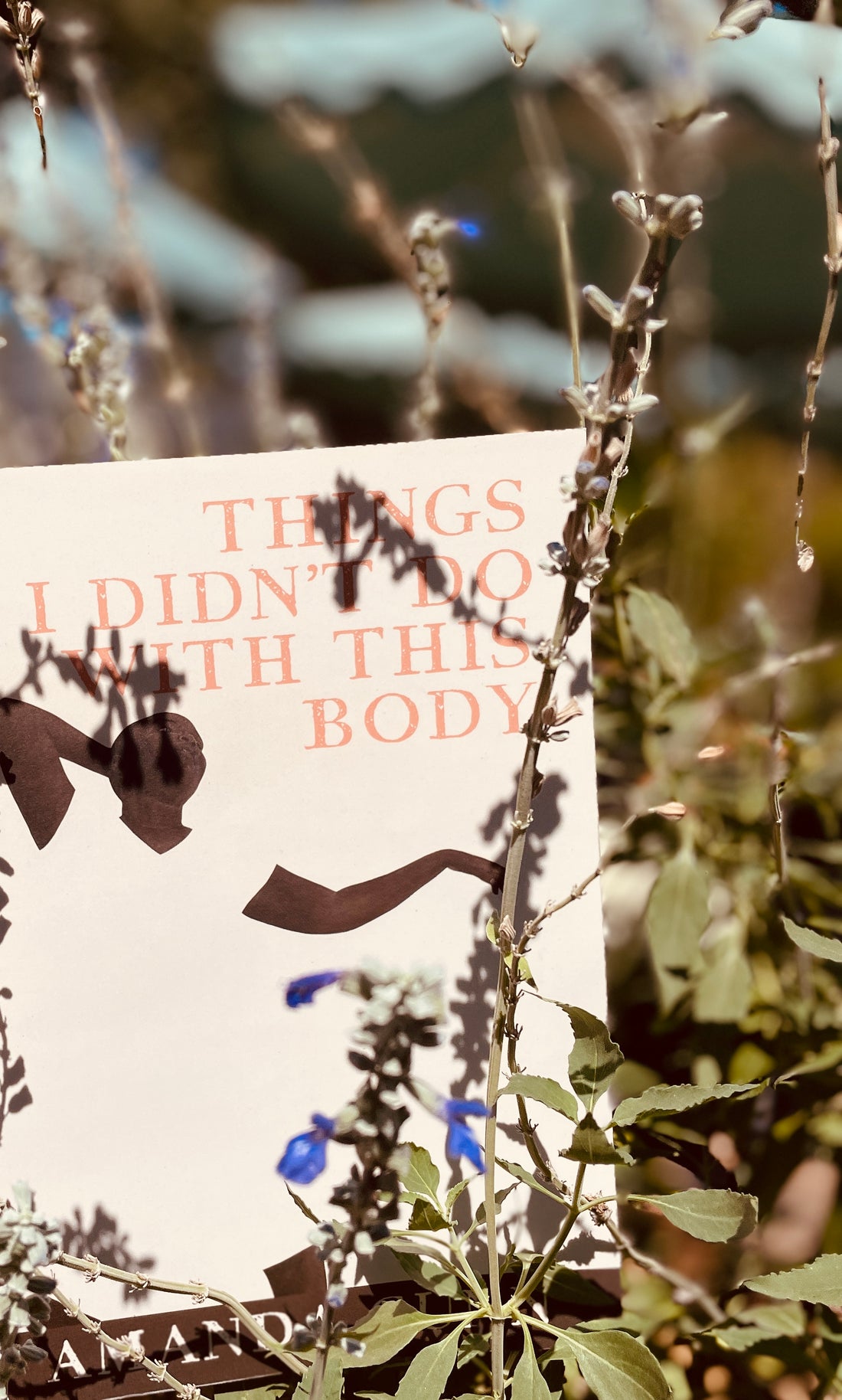
Part II: The Admirable Experience of Things I Didn't Do With This Body
Share
written by Brittany
Reading this book has been an experience for me. I read the first half in a moment of my journey where life around me felt fast, and I desired to slow down so that I could lean into time, into the presence of creativity. In reverence, I read each section carefully, pausing after the last word of each poem, introspection and empathy covered me like weighted throws. I needed that. I needed to read with intention. Sitting in what I read brought me back to me. And with the same intentionality, I paused at the end of section III, savoring my self-return, and am just now, again, parting the pages of Things I Didn’t Do with This Body to the crinkly blue post it note marking my stop at section IV a month later.
This time, I’m in another space mentally. My life and mind feel more grounded and in alignment with the pace of a slower flow. Reading this book feels like a meditation… Reading, for me, feels like a meditation.
Section IV.
The seven poems in this section are written similarly. “The Name For” set the tone for the section by pulling me into the scribbles of Gunn’s mind during depression. There are no periods or pauses in her prose. Each phrase feeds into the next and thoughts crowd each other, one overlapping the other. Always developing, always going. The poem opens with, “This place is a sickness where I don’t know the language no this sickness is a place where I don’t know the language no that’s not lithium is a country where I don’t know the language my thoughts aren’t my thoughts aren’t God….”
She details what she clings to, and eventually releases, during that time: medication, a stuffed penguin, a doll, perfumes, “good” and “bad” romance novels. The section ends with “Level,” a poem that, to me, paints a picture of her wrestle to find balance, fighting for the harmony beyond mania and depression.
The structure of her writing in this section feels like art. I found myself marveling at her creative form in this set of poems.
Section V.
It’s like Gunn is walking me through a thick forest of loss in this section, pointing out the events underneath the canopy of grief that she revealed in the first half of the book. She lay bare the physical loss of her lover from youth with strings of sweet words like those found in a love letter in “Wake”:
To your wake I have carried your favorite perfume, sneaking it like your palm beneath my blouse – gasoline & leather, fresh violets vanishing, already vanishing from the moment I sprayed them & returning your body to me as they go. I want to be the thing that contains you, though I suspect you cannot be contained.
She processes the grief of a lover in her adulthood through incomplete sentences in “It’s Like We – “, which feel symbolic to the emotions of incompleteness that grief can often bring:
“Did her mother find her like –
Was she sober the day that she –
Did she remember –
She never answered my text about –
I never –
I’ll never –“
And in “Kaleidoscope,” her father’s wordless compassion that was introduced in the beginning of the book makes another appearance. He sends this compassion through a group text to his children in the form of a recording: a kaleidoscope of monarch butterflies in Mexico. This sweet poem closes the section and, to me, creates a foreshadow of lightness for the final section.
Section VI.
This is my first experience with Gunn’s writing and from what I now know, she is not one to hold back the real, raw truth no matter the language, depth or pain. I admire it. And when I finished the last sentence of the final poem in the book, “Like This”, I also held admiration for her ability to tell a story. HEA does exist but instead of neglecting reality like most fairy tales and cheesy romance stories often do, happily ever after happens through the act of accepting reality as is (hardships, blemishes, imperfections and all) and choosing to look upward, outward, and around to soak in the good that still exists, will exist, and has always existed.
This final section of Things I Didn’t Do with This Body felt like a happily ever after for Gunn. Pain still lingering, loss still occurring, events of the past still apart of her, but acceptance is present and so is joy and so is hope. In “Happy and Well”, Gunn writes “On a Tuesday in spring, I call my mother – not exactly not crying: I think I might be happy.”
I may not exactly not be crying in gratitude and admiration right now. Thank you, Amanda Gunn, for sharing your life beautifully.